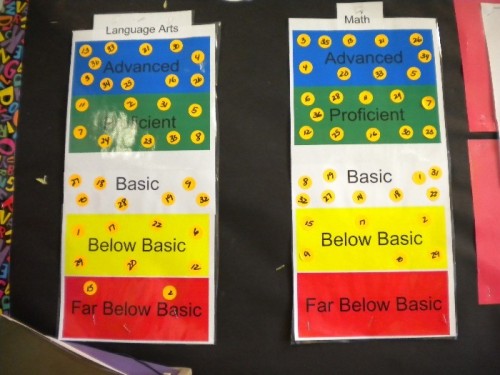Facing the Trilemma of Classroom “Data Walls”
Over the past few years I have visited many classrooms. In elementary schools, I have seen pasted on a wall or cork board, “data walls” that look like these:


Usually, students have numbers or aliases assigned to mask their identity. Of course, most students find out who is who.
Whether to use these “data walls” to spur individual students to improve their academic performance or have data displays for the entire class without individuals being noted or not have them at all in a classroom but use individual and class data only among teachers or school leadership teams has been debated in blogs, media, and journals for the past decade (see here, here, here, and here).
With the onset of the mantra “data driven instruction” largely stemming from the accountability features of the federal law, No Child Left Behind (2002), school boards, superintendents, principals, and teachers have heard time and again the importance of gathering, analyzing, and using test data school-wide to improve instruction and in classrooms for students to plan individual strategies. Let’s call that “retail” data.
“Wholesale” data are school-by-school and district numbers that are aggregated and sent to administrators, teachers, and parents. Those data may (or may not) become a basis for policy changes.
The focus on test scores since the early 1980s–remember A Nation at Riskreport–has given critics the argument that NCLB further narrowed both Continue reading: Facing the Trilemma of Classroom “Data Walls” | Larry Cuban on School Reform and Classroom Practice
